Welcome to Asia
The world’s largest continent has more experiences than any one person could see in a lifetime. From Turkey to Tokyo, you can experience wonders that sprang from the Mesopotamian cradle of civilization from the most ancient human creations to the biggest, most modern cities in the world. Asia is a mixed bag when it comes to the travel experience needed to visit some of its destinations. Many of the destinations we have selected to help you organize your fly-by are suitable for intermediate-level travelers.
Must see countries in Asia quick links: Bhutan | Cambodia | China | Hong Kong | India | Indonesia | Japan | Laos | Malaysia | Philippines | Singapore | South Korea | Thailand | United Arab Emirates | Vietnam
Bhutan
Paro Taktsang (Tiger’s Nest)
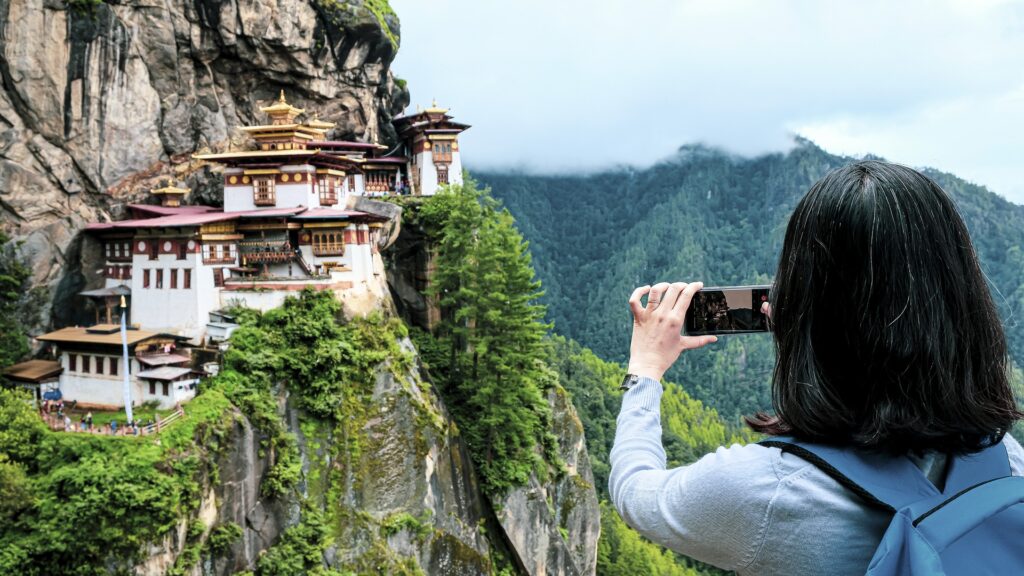
Paro Taktsang is a sacred Buddhist temple known for its precarious perch on a cliffside 3,210 meters from ground-level. The golden interior of the temples are as stunning as the outside. Given its location in the mountains of Bhutan, you’ll be climbing a lot of steps as you navigate the temples and their corresponding caves; all in all, expect an 8½ km hike round-trip. The Tiger’s Nest is most easily accessed via cab from the nearby town of Paro, where, if you still have energy, you can visit the National Museum of Bhutan.
Cambodia
Angkor Archaeological Park
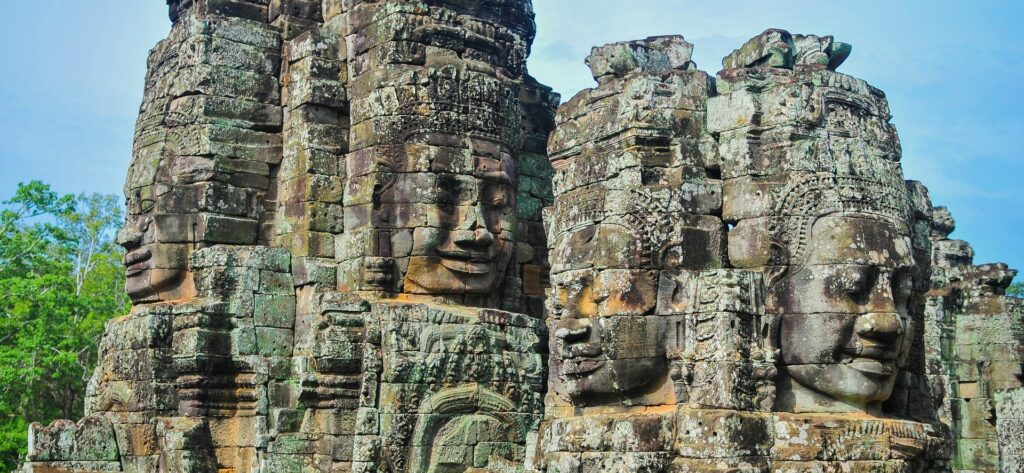
Angkor Wat means “City of Temples” and when you see how big it is, you’ll understand why. It’s the largest religious monument in the world by land area at over 1½ sq. km. The fascinating detail on the temple walls showcase its roots as a Hindu temple, depicting epic tales like the Mahabharata and Ramayana. Starting from the nearby town of Siem Reap, it’s close enough to bike there, but you might want to consider hiring a tuk tuk for the day to see the temple instead to avoid overexerting yourself in the extreme heat. For the most comfortable conditions, visit November-April, but be warned, it will be crowded.
China
Beijing
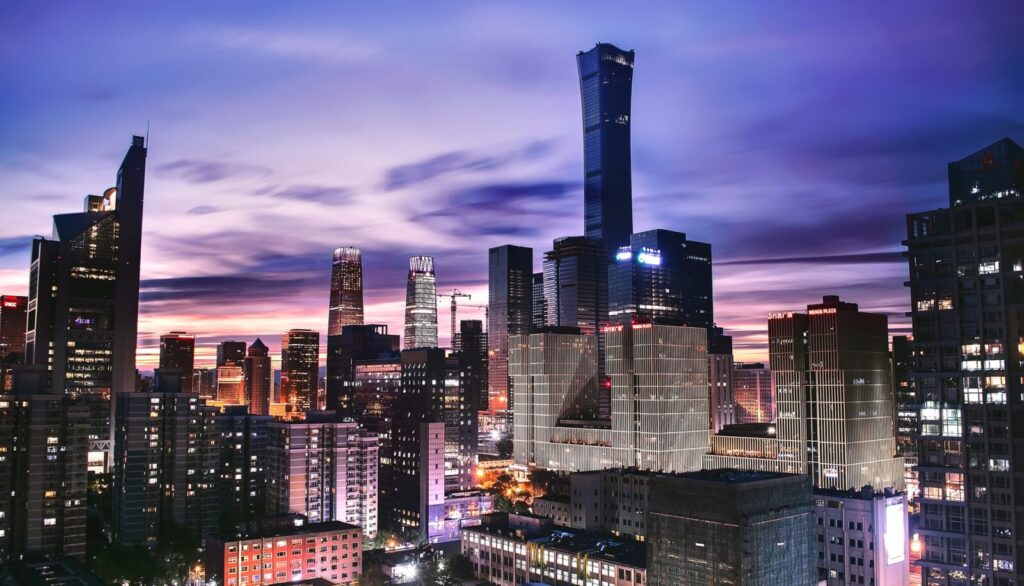
Beijing is the world’s largest capital city. Beijing’s public transportation system is incredible since it has to accommodate its massive workforce, so wherever you need to go, there’s a train that will get you there. There are bike rentals everywhere too, so you can travel Beijing as millions of its residents do. There are thousands of things to see or do in Beijing, but definitely check out historical sites like the Forbidden City, Tiananmen Square, and the Summer Palace. For a more cosmopolitan Beijing experience, head over to the Wangfujing Pedestrian Street. There’s also natural beauty to be found in the city, like Longtan Lake Park just east of the Temple of Heaven.
Great Wall of China
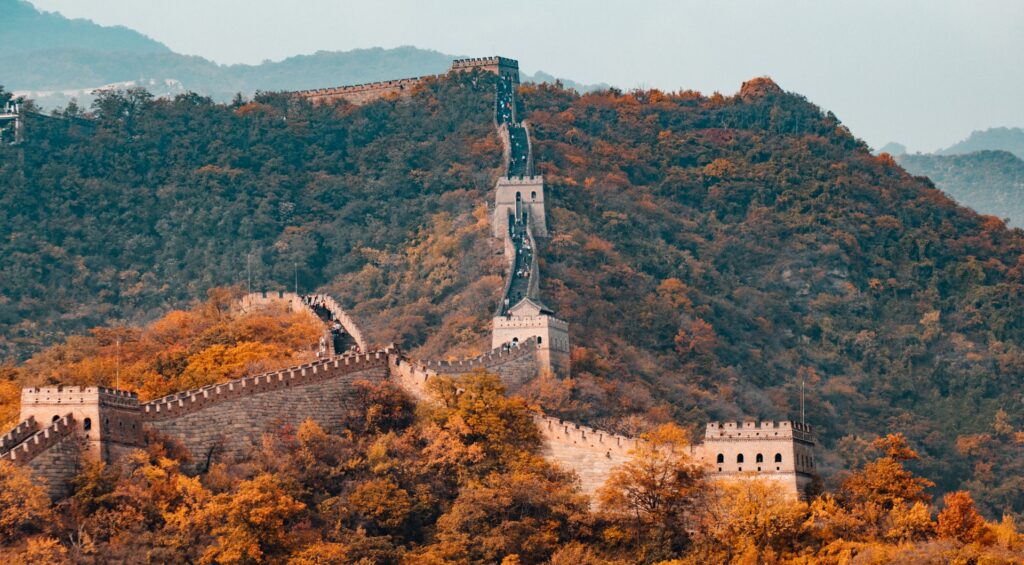
It can’t really be seen from space, but it’s size is no less amazing. Built to keep nomadic invaders out of Imperial China 500 years ago, its strength has withstood the test of time. We recommend visiting in the spring and the fall so you can take in the stunning scenery while avoiding peak crowds. Some sections of the wall are more suited to strong hikers, so be mindful of which section of the wall you choose to visit; Mutianyu and Badaling are good choices for most everyone and are both 90 minutes from Beijing. There are plenty of tour options to view the Great Wall to choose from, and they are widely regarded as the easiest way to access and view it. Remember: you’ll be walking a lot when you visit, so dress for the weather and bring water with you.
Hong Kong
Macau
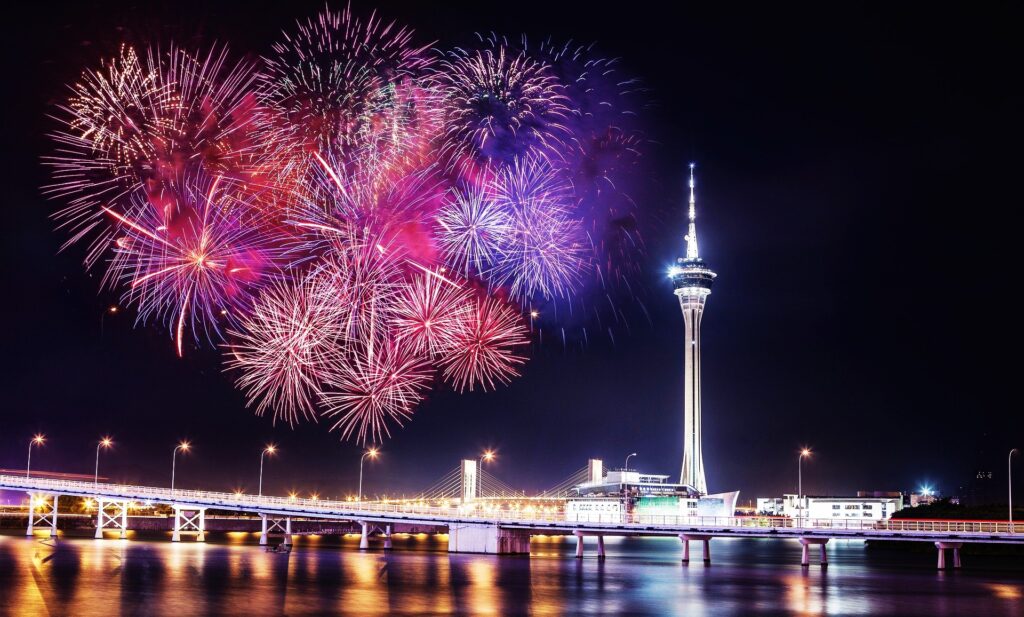
If you’re in Hong Kong, you might want to consider incorporating Macau into your Southeast Asian fly-by. Known as the Las Vegas of the East, it’s a gambler’s paradise, home to over 30 casinos. If you’d rather put your money toward other activities, you can explore remnants of colonial Macau from its former occupation by the Portuguese. The viewing the intricate facade of the Ruins of Saint Paul’s is a particularly popular destination. You could also check out a slice of Macanese life in Taipa Village which offers a glimpse into the marriage of Chinese and Portuguese culture that is quintessential to Macau.
Mong Kok
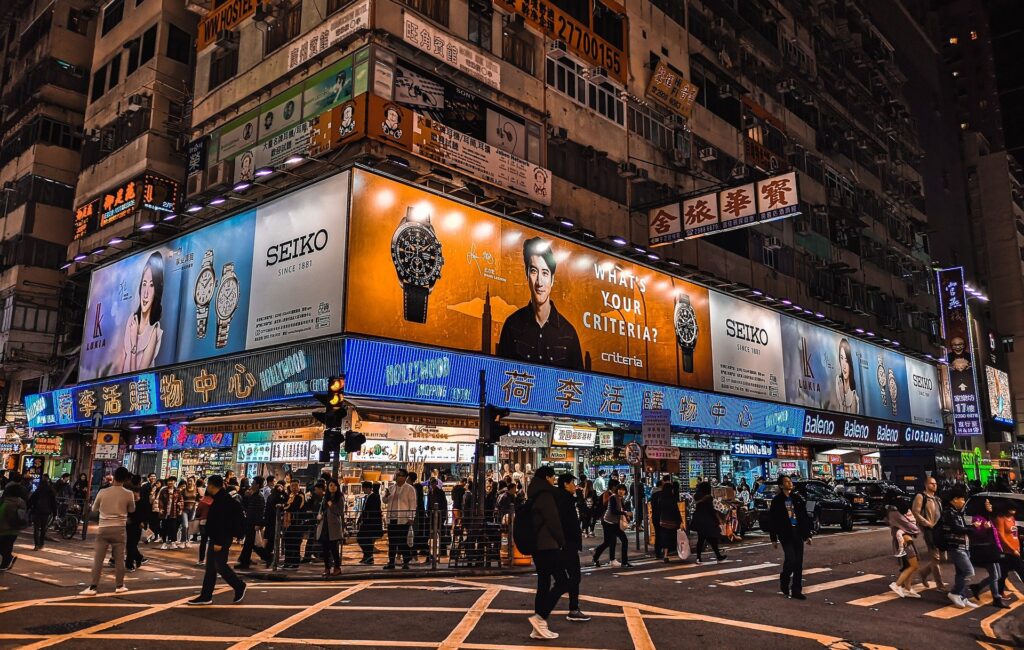
Looking for something? Chances are you can find it in Mong Kok. It’s one of the busiest commercial districts in the world and is known not only for the shopping, but for the nightlife. Once you’ve had your fill of haggling at market stalls, sample the street food at the myriad of carts throughout Mong Kok–I hear the stinky tofu is delicious. Two subway lines run through Mong Kok with stops at the north and south ends as well as the middle, making travelling through the district a breeze.
Victoria Peak
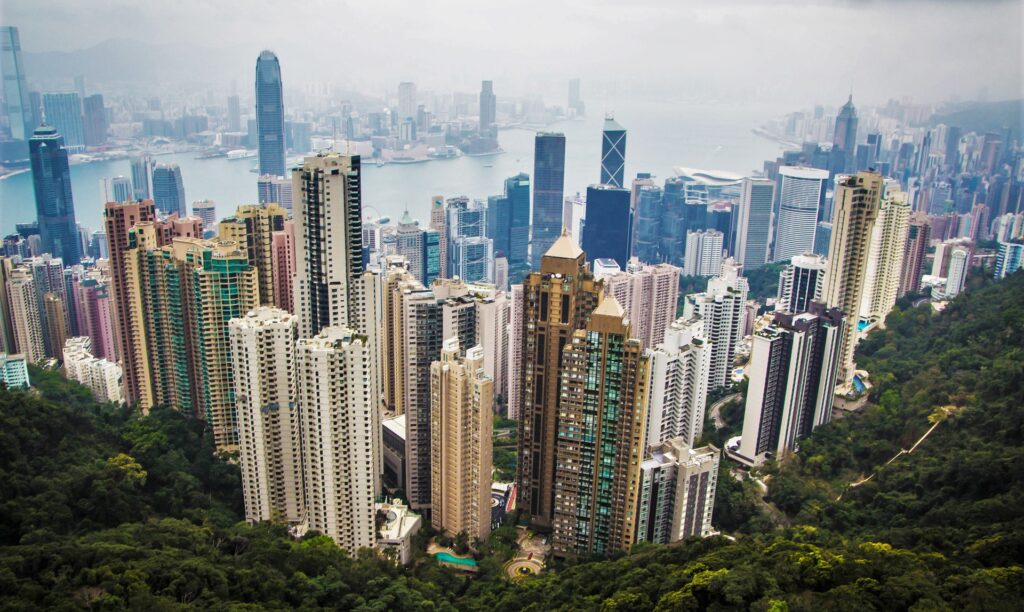
Hong Kong is massive, and you can get a feel for just how big it is by visiting the lookout at Victoria Peak. If a hike wasn’t in your fly-by’s plan, don’t worry! For about $13 USD, you can buy a return ticket for the tram and gain access to the Sky Terrace for the best view of Hong Kong. If, on the other hand, you wouldn’t mind a little walk, you might like to take the Hong Kong Trail or stop by the Victoria Peak Gardens once you hop off the tram. To get to the peak, take the Tsuen Wan MTR line to Central station, then take a short tram ride to Murray Road. After that, you’re just a short walk from the best view in town!
India
Taj Mahal
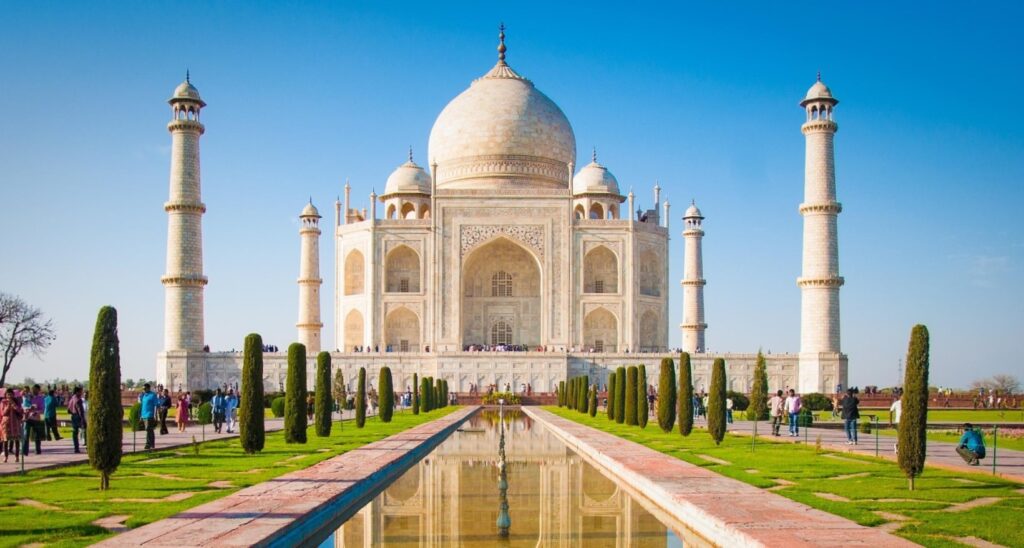
The Taj Mahal is instantly recognizable to people around the world, with its white marble facade against a crystal blue sky. Built in the 17th Century as a monument to love, its stunning Mughal architecture has captured the eyes and hearts of millions throughout the years. As you walk the grounds of the Taj Mahal, take some time to observe the details in the marble, the tiling, and the painting. Even though it’s off the beaten path, there are trains that run daily from a number of cities, like the Shatabdi Express in Delhi. If you take the train, be sure to book your ticket at least a couple weeks in advance, and travel sometime during the winter months to avoid melting in the extreme heat.
Indonesia
Bali

Bali truly has a little something for everyone, whether you’re on a shoestring budget or looking for luxury or if you’re looking for an active experience or a more laid-back one. Most travellers start from either Kuta or Ubud, but things can get kind of crazy with tourists, so if crowds aren’t for you, you may want to try to venture outside those towns–it’s cheaper anyway. Bali is the only Hindu-majority Indonesian province and has developed its own unique culture as a result; check out a Balinise dance performance complete with gamelan, a type of ensemble music developed in Indonesia.
Bromo Tengge Semeru National Park
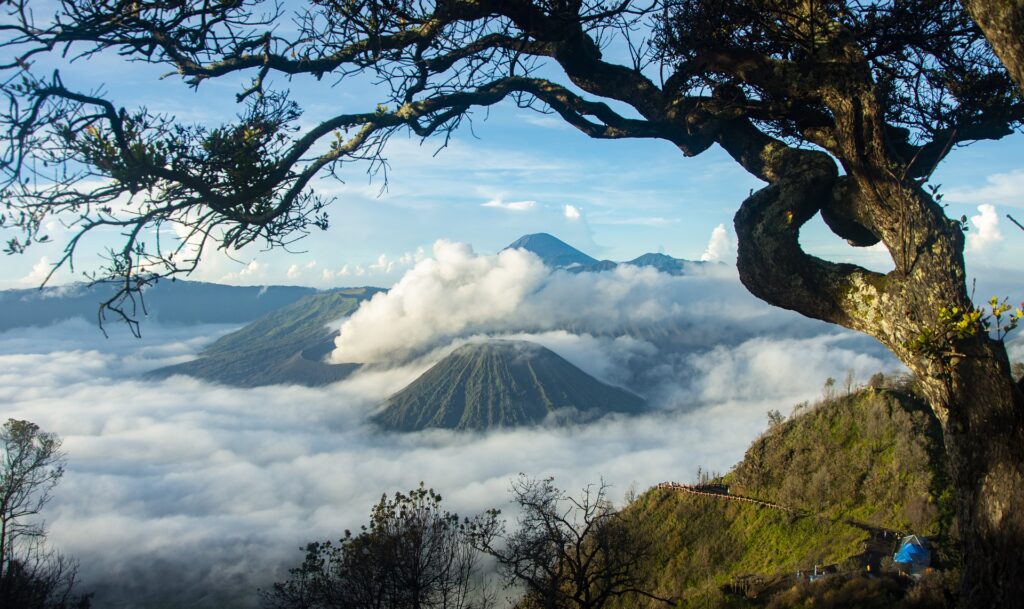
There’s a lot going on in Bromo Tengge Semeru National park. From the wildlife, to the waterfalls, and the sand sea to the volcanoes. There’s a lot to take in. During your visit, plan to visit Mt. Bromo, whether you choose to climb it yourself or tour it with a jeep; you’ll get a great view of the sand sea and the other volcanoes within on your way up. You can also get some culture in by visiting the Hindu temples scattered around the park that belong to the native Tengger people. To get to the park, hop a flight from Jakarta across Java to Surabaya. After that, you can travel to your desired entrance via bus.
Japan
Kyoto
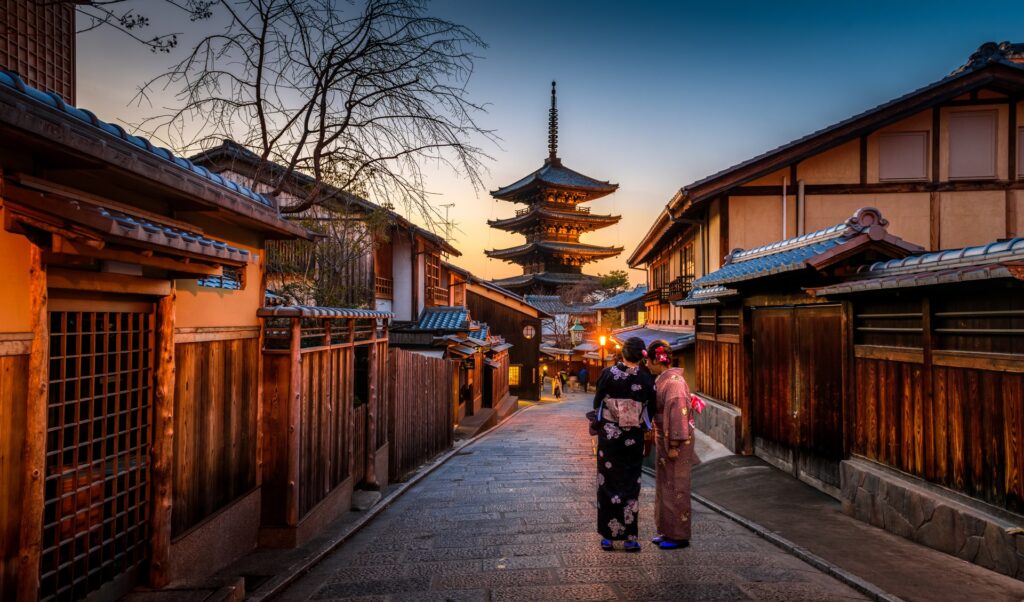
If you want to experience Japanese culture, Kyoto’s the place to do it. From the architecture to the shrines to the geishas you may bump into on the street. The shrines and palaces are the main attraction here. If you want to weave a little retail therapy into your trip, the lively Yasaka Shrine is just outside a retail district–it’s a great place for flower-viewing in the spring and is host to the famous Gion Matsuri festival in July. It doesn’t take long to fall in love with Kyoto and all it has to offer, but trust us, you’ll want to spend at least a couple days here to soak it all in.
Shinjuku Gyoen
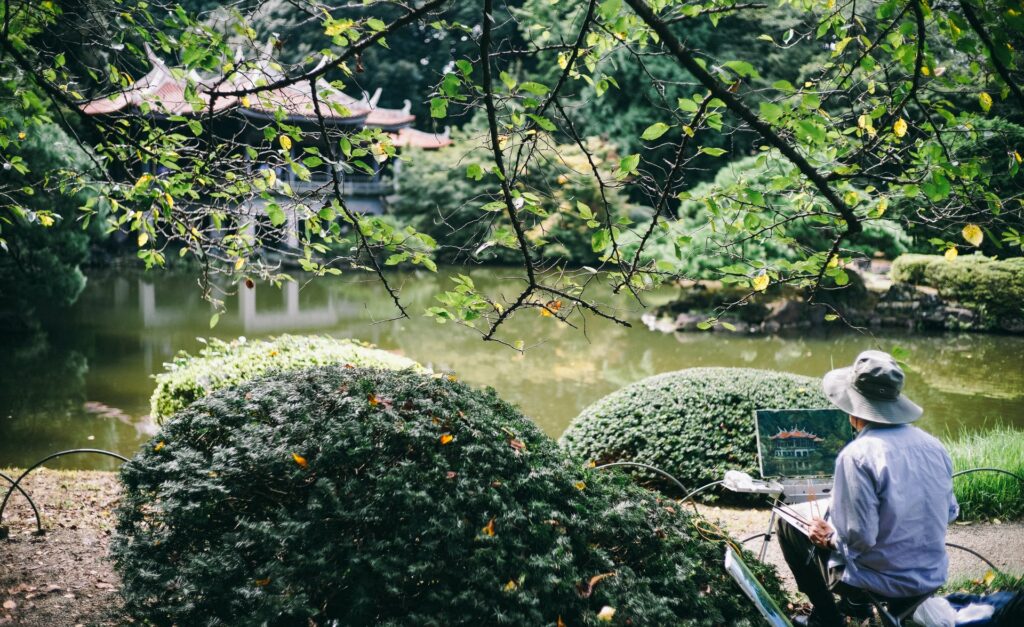
Tokyo has more greenspace than you may think. If you want to take a break from the hustle and bustle of the city, head over to Shinjuku Gyoen. This collection of Japanese, English, and French gardens has been around since the Edo Period of the 17th Century. They’re beautiful at any time of year, but springtime is great for viewing the thousands of sakura blossoms on the over 400 cherry trees in the park. October is also a good time to go, due to the beautiful colors of the autumn leaves. The gardens are easily accessible from the nearby Shinjuku station on the JR train line.
Tokyo

Old and new coexist harmoniously in the busy city of Tokyo! Two airports serve the Tokyo area and the city is easily accessible from both via a short train ride. Tokyo is huge but is easily traversed using the city’s extensive rail system. There are so many things to see in Tokyo, but don’t skip out on the Meiji Shrine, just across the street from the Japanese fashion haven of Harajuku and it’s train stop, which is also a 15 minute walk away from the famous Shibuya Pedestrian Crossing. The Imperial Palace is another must-see, just outside of Tokyo Station. If you’re a gamer, hop off the train at Akihabara Station in the early evening to see the electric city in full effect. If you go in April, be sure to swing by Ueno Park to catch the cherry blossoms in full bloom.
Laos
Luang Prabang
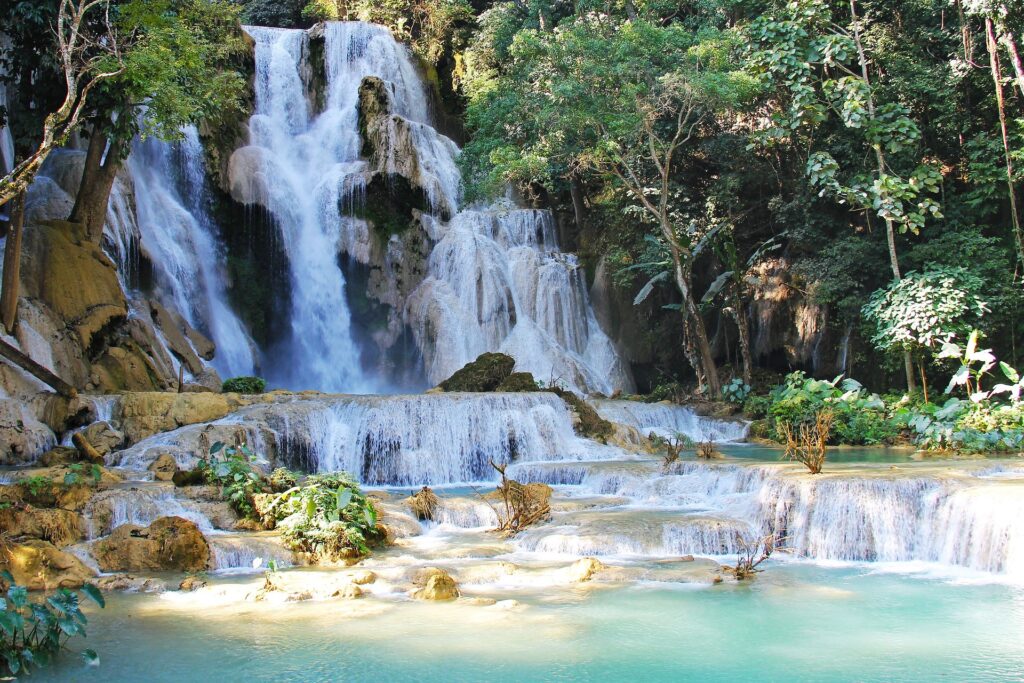
Nestled between the Mekong and Nam rivers, LuangPrabang is a great place to capture the essence of Laos from its natural beauty to its history and culture. The city is known for its Buddehist temples; if you want to take a beat to express gratitude as you travel, stop by the gorgeous, golden Wat Long Khoun, otherwise known as the Monastery of the Happy, or you could stop by Wat Xieng Thong during a festival. After a morning of temple-hopping, you could take a boat to chill out at the Tad Sae waterfall, or if you’re looking for something a little more cerebral, you could explore Laos’s diverse culture at the Traditional Arts & Ethnology center. Once you fly in, there isn’t much in the way of public transportation, but you can rent a bike or hail a tuk tuk or a taxi.
Malaysia
Kuala Lumpur
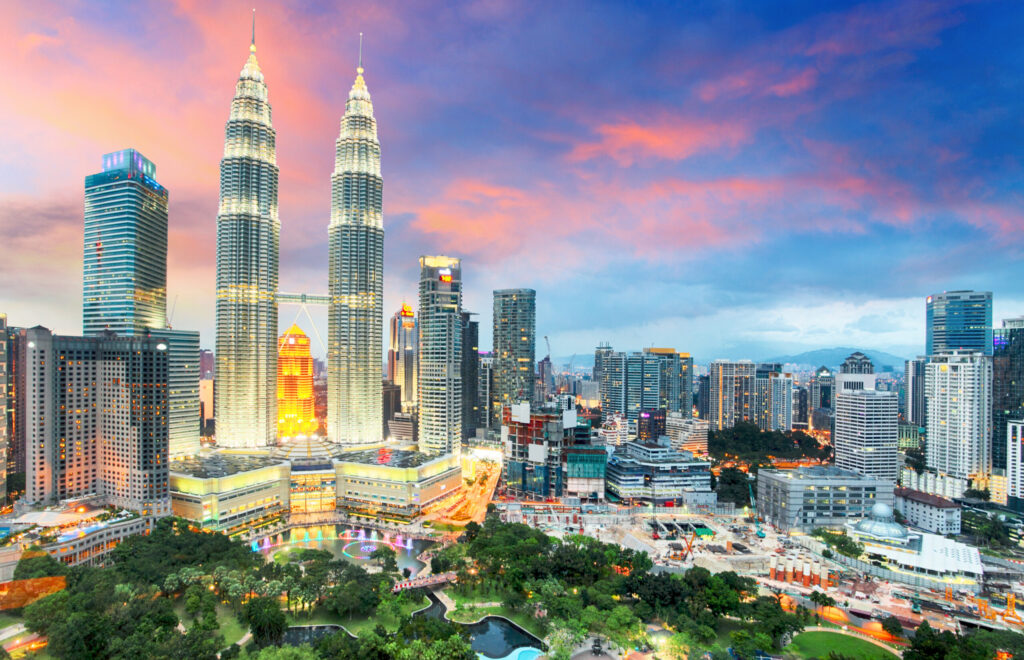
Kuala Lampur is the epicenter of a nation on the rise. Among the many fun opportunities, you can explore in Kuala Lampur are the Istana Negara palace, the Taman Connaught Night Market, and the Kuala Lampur skydeck. You may also want to check out the Batu Caves shortly outside the city for your nature fix. Due to the increasing urbanization of the area, Kuala Lampur has an extensive network of public transportation options, simplifying your travel around the city. While you’re here, don’t skip out on the street-food scene. While Malaysian street food might not be as universally popular as others, you’ll find the food is a reflection of Malaysia’s confluence of cultures that define it.
Malacca
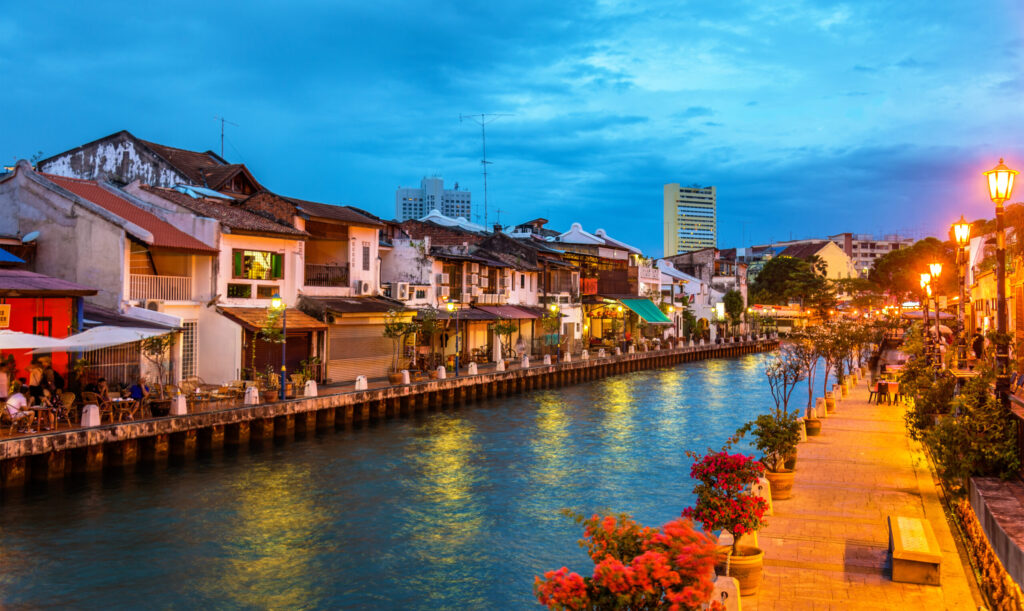
If you want to explore the cultural diversity of Malaysia and its colonial history, make your way down to Malacca after visiting bustling Kuala Lampur. The city has served as an international port for centuries, playing host to travelers from China, India, the Middle East. Europeans have left a strong imprint of Malacca during its colonial era from the 1500s up until World War II, bringing Portuguese, Dutch, and English influences which are easily visible in local architecture. Just walking the streets of Malacca is enough to see what a wondrous place it is. Because Malacca isn’t as modern as Kuala Lampur, its public transportation options are limited, so consider taking a taxi or a trishaw to get to further destinations. Before you catch a train down to Singapore, don’t miss the Jonker Street Night Market on a Friday or Saturday.
Philippines
Banaue Rice Terraces

Who knew farming could look so beautiful? The Banaue rice terraces in northern Luzon are an important part of local life and heritage, which you can see in the nearby village of Tam-An. To see the rice terraces in their full glory, stick to late spring to mid-autumn (but avoid summer so you don’t get caught in a landslide). It’s a real hike to get to Banaue, about a 9-hour bus ride from Manila, so come prepared for that if you plan to go.
Palawan

Hop an 80-minute flight from Manila to experience the cerulean waters and white sand beaches of Palawan! The abundance of natural beauty and wildlife are Palawan’s calling-card. Among the sites you’ll want to see are clear waters of Kayangan Lake, Coron Bay’s shipwrecks, and the Cabayugan River, the world’s longest navigable underground river. There are a number of transportation options available on the island, public or rental, but just once, you might want to try riding on the roof of the iconic Jeepney to travel like a local.
Singapore
Gardens by the Bay

When you get to Singapore, you’ll realize why it’s called the Garden City! Singapore intentionally incorporated greenspace into its rapidly developing urban landscape, allowing the local ecosystem to thrive in the dense urban environment. The Gardens by the Bay are the crown jewel of Singapore’s flora, consisting of three gardens along the Marina Bay Waterfront. Spanning over 100 hectares, there’s an incredible amount to see, but you’ll definitely want to check out the Flower Dome, which is the world’s largest glass greenhouse, and the Floral Fantasy containing hanging gardens and incredible floral art. The gardens are easily accessed from the Bayfront subway station by both the Downtown and Circle lines.
Sentosa Island
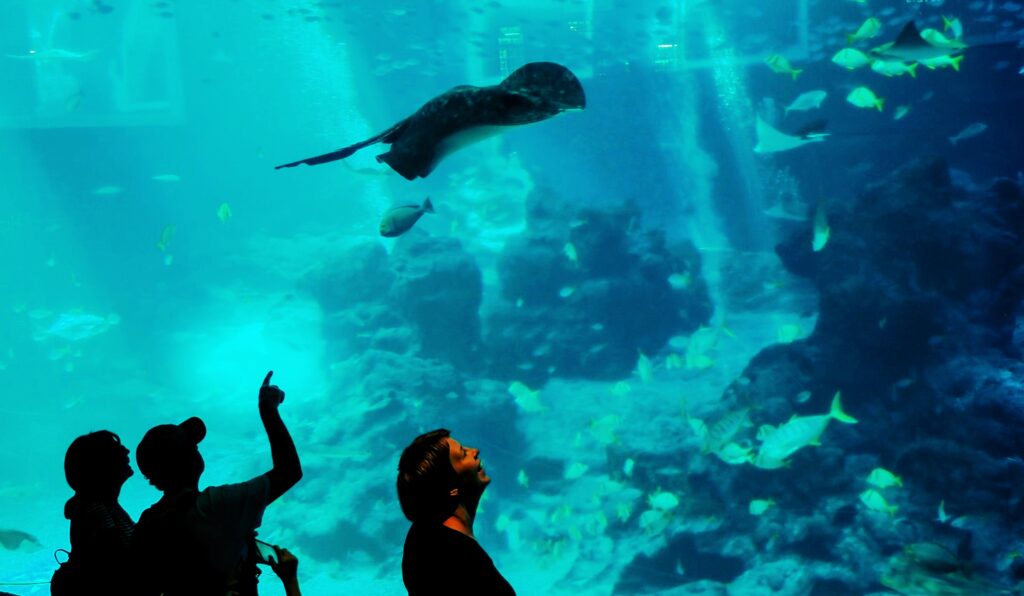
Sentosa Island is all about fun in the sun! It’s home to many of the main leisure activities Singapore has to offer, featuring beaches, spas, golf, and a lot of family-friendly activities. One of the best-known attractions on the island is the S.E.A. Aquarium, which boasts the largest collection of manta rays. The island is not served by a subway line but can be accessed via bus. Take either the Northeast Line or the Circle Line to the Harbourfront subway station, where you can catch the Sentosa Express bus to Resorts World Station for easy access to many of the island’s attractions.
South Korea
Jeju Island

South Korea is a very busy place, so where do Koreans go to get away from it all? They go to Jeju! There’s a lot of natural beauty you can explore here including its beaches, waterfalls and lava tube caves. There are plenty of other leisure activities if you’ve had your fill of the outdoors like the Teddy Bear Museum, Eco Land Theme Park, and even an erotic sculpture park that a lot of people seem to have enjoyed. Jeju is very popular in the winter due to its warm climate, so you may wish to plan accordingly to avoid crowds. The easiest route to the island is by air, and you can catch a flight from a number of Korean cities (and even from some nearby countries like China and Japan). If you’d rather take the scenic route, you can also take a ferry from the mainland city, Busan, but expect the ride to take between 3 and 12 hours.
Thailand
Bangkok
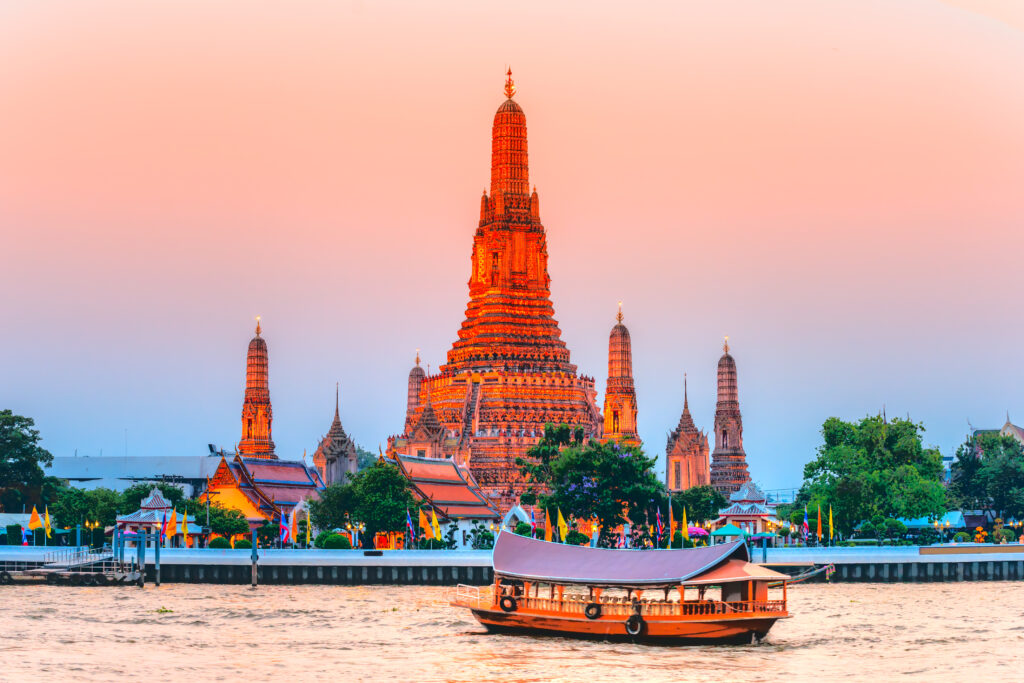
Bangkok is the kind of place that really needs to be explored. Sure, there’s a palace all kinds of temples (which are definitely worth seeing), but wandering around, or in some cases floating around, really helps you get the full experience. The markets here are nothing short of remarkable, like the floating markets or Khao San Road, known as the backpacker capital of the world. Bangkok’s Chinatown is the place to be if you’re hungry. Most anywhere you’ll want to go is within walking distance of the Chaloem Ratchamongkhon, a subway line that circles the city. In addition to the trains, there are also busses, taxis, and tuk tuks that will take you wherever you’d like to go in Bangkok.
Krabi Province

Krabi Province is situated in southern Thailand on the Andaman Sea. The main attraction here is, without a doubt, the natural beauty. Turquoise waters and white sand beaches are accompanied by limestone hills and caves making for a truly unique landscape. This is very much a kick-back-and-relax kind of place, but if you insist on doing something active, try out a rock-climbing excursion or making the hike up to the Tiger Cave Temple. If you can handle some rain, we recommend going during the “green season” (November-April) to avoid the vast majority of other tourists. To get to Krabi, take a train from Bangkok to Surat Thani, then hop on the bus to Krabi–you’ll be at the beach before you know it!
United Arab Emirates (UAE)
Dubai
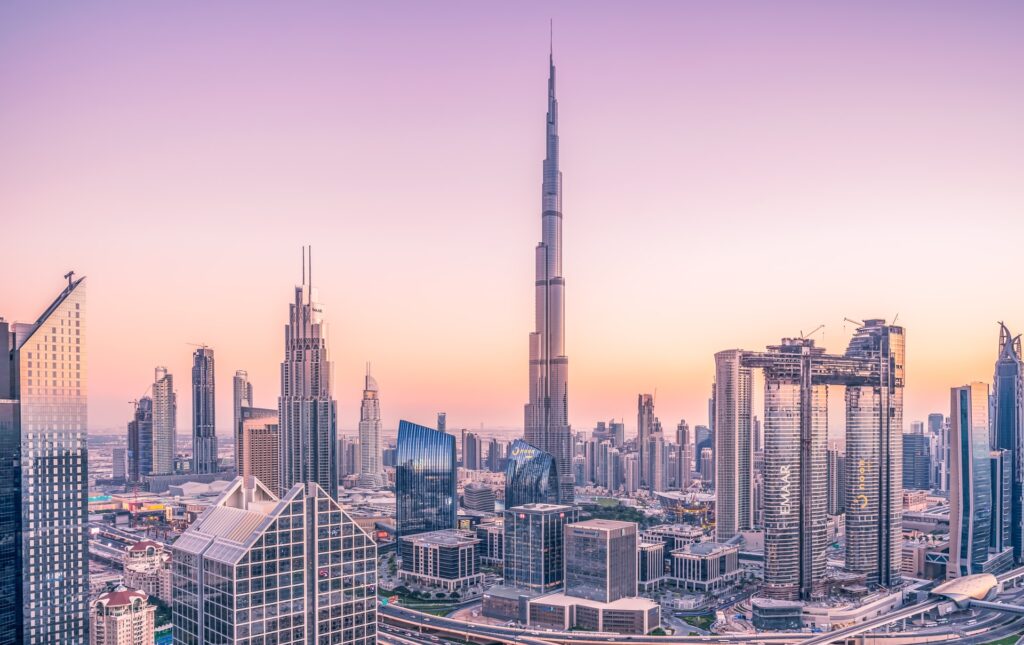
Dubai is an oasis unlike any other. This Arabian Sea metropolis is home to all things luxury, down to its well-known fleet of Lamborghini police vehicles. No trip to Dubai would be complete without visiting the top floor of the Burj Khalifa, the tallest building in the world, which you can do for about 40 USD. For an off-the-beaten path experience, you can swing by Alserkal Avenue to visit local galleries featuring Middle Eastern and African art or you can visit Bastakiya to do a little shopping amidst the Arabian-style architecture. Be aware of the weather as you plan your fly-by; it gets very hot, so plan your trip sometime between November and March to avoid extreme heat. When you’re in Dubai, taxis are the most popular way to get around, though there is also a metro that operates within the city.
Vietnam
Halong Bay
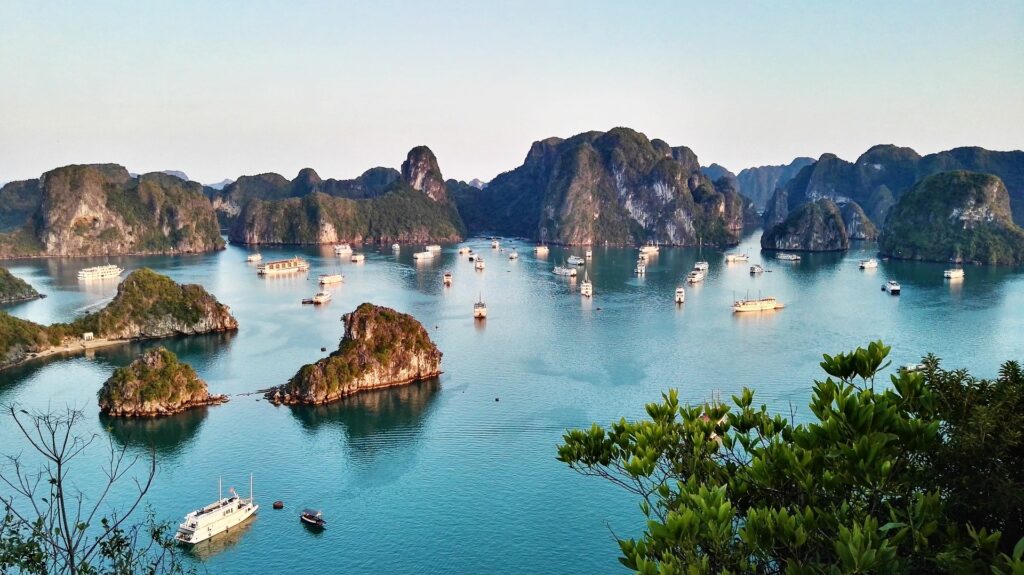
Halong Bay is a maze of limestone rock formations that have been worn down to their current shape over 500 million years of erosion. There are several cruise options that take you around the bay and marvel at the landscape. When you take a cruise, we recommend taking a cruise that is at least somewhere in the middle pricewise for safety purposes. If you don’t mind crowds, consider visiting in late April or early May to see the Halong Bay Carnaval, where you can catch parades, fireworks, and get a dose of the local culture. It’s likely that you won’t be able to find a flight to Halong Bay directly, but if you can’t, you can always fly into Noi Bai in Hanoi and bus into the bay.
Must see places around the World by continent: Africa | Antarctica | Asia | Australia/Oceania | Europe | North America | South America

